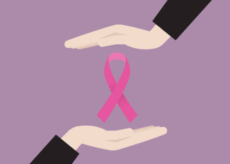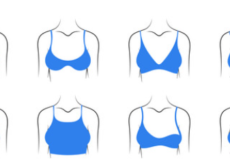Age 40? 5 Breasts Changes Women May Experience

After celebrating 40, because breasts grow after 40, it’s not unusual to notice some signs of aging by looking in the mirror. While some of the changes shouldn’t surprise you at all, such as fine lines around the eyes, a center that’s a little smoother than it was in your 20s and 30s, others are more unexpected. A common but often unexpected change: the size, shape and feel of your breasts.
The degree of drama of the transformation varies greatly and is often closely related to changes in the menstrual cycle. After the age of 40, many women begin to have higher increases in estrogen for short periods of time.
These hormonal ups and downs during perimenopause (which can begin about five years before menopause occurs) can translate into shorter periods. But also because breasts grow after age 40. So can weight gain (also common during this time) and, of course, simply getting older.
5 breast changes you may experience at the age of 40
(1) Breasts become extra sensitive
As you progress through perimenopause, there is a good chance that your menstrual cycle will become shorter and shorter, which means that you will get your period more often. And as each period gets closer, PMS can have a big impact. It can cause more tenderness and swelling in your breasts. You may feel like you’re going through some kind of puberty again.
While you can’t stop your hormone clock, you can relieve breast pain by minimizing external sources of estrogen. This includes eliminating soy-based foods (such as tofu), since they contain natural plant estrogen, and limiting consumption of red meat, which can also raise your levels.
(2) Breasts size increases
Thanks to the triple whammy of weight gain, swelling from increased estrogen, and inflammation (which increases in the body at age 40), you may have a sudden need to go bra shopping because breasts grow after age 40. Breasts often get bigger, and most women who already had large breasts can’t stand to have even larger ones.
Raising a cup may be unavoidable because breasts grow after 40. But maintaining your weight (or losing weight if you’re overweight) can help stay at the size you’ve become accustomed to. Keeping weight under control also eases tenderness and sensitivity, because stored fat increases estrogen levels in the bloodstream.
(3) Breasts Drop
Severe deflation does not usually occur until age 50, when you are postmenopausal and estrogen levels are low. But thanks to gravity, you may start to see some sagging in your 40s. You lose collagen, your skin becomes less elastic, and your tendons – called Cooper’s ligaments – lose elasticity and strength,”
These changes are purely aesthetic, but if they bother you, don’t skimp on the push-ups: Strengthening the muscles behind your breasts can help reduce the appearance of sagging. What is also helpful in making you look (temporarily) more animated and comfortable? A super-supportive bra.
(4) They fill out with more lumps and bumps…
Again, blame your hormones. Fibrocystic changes are common at age 40. You may notice that your breasts feel more lumpy because they grow larger after age 40, which is usually nothing to worry about as long as the changes are similar in both breasts. It is also normal for your breasts to feel progressively larger as your period approaches.
If you have any concerns, or if you suddenly find a lump that wasn’t there last month or that doesn’t go away after your period starts, ask your doctor to check it out.
(5) They may become dense
Breast density is not something you can feel. It refers to the amount of fat you have compared to the amount of denser tissue such as glands and ducts because breasts grow after 40.
Dense breasts are much more common in young women (pre-menopausal) than in older women (post-menopausal). In fact, some women are likely to have denser breasts in their 40s than in their 30s because of all the hormonal changes (although most will not have had a mammogram by age 30 compared to 40).
Breast density is important because it makes it harder for radiologists to detect cancer on a mammogram, and density alone appears to increase the risk of breast cancer. If you don’t know whether you have dense breasts, ask your doctor. (Information should come with the mammogram report) You should also ask, if you are a candidate for an ultrasound. In women with dense breasts, 50% of breast cancers are missed during a mammogram.

Nilam is the owner and writer of EverydayCares.com. She is an experienced pharmaceutical professional and believes that many of the health problems can be cured naturally at home. She enjoys reading scholarly medical journals and gets inspiration to write up-to-date practical information and resources and makes sure all of the articles are of the highest quality. The best way to reach her is via [email protected]
Medical Disclaimer:
The contents on everydaycares.com, such as text, graphics, images, and other materials care for informational purposes only. The content is not intended to be a substitute for professional medical advice, diagnosis, or treatment. Always seek the advice of your physician or other qualified health provider with any questions you may have regarding a medical condition. Never disregard professional medical advice or delay in seeking it because of something you have read on this website! Use of any information contained in this website is at the sole choice and risk of the reader.



